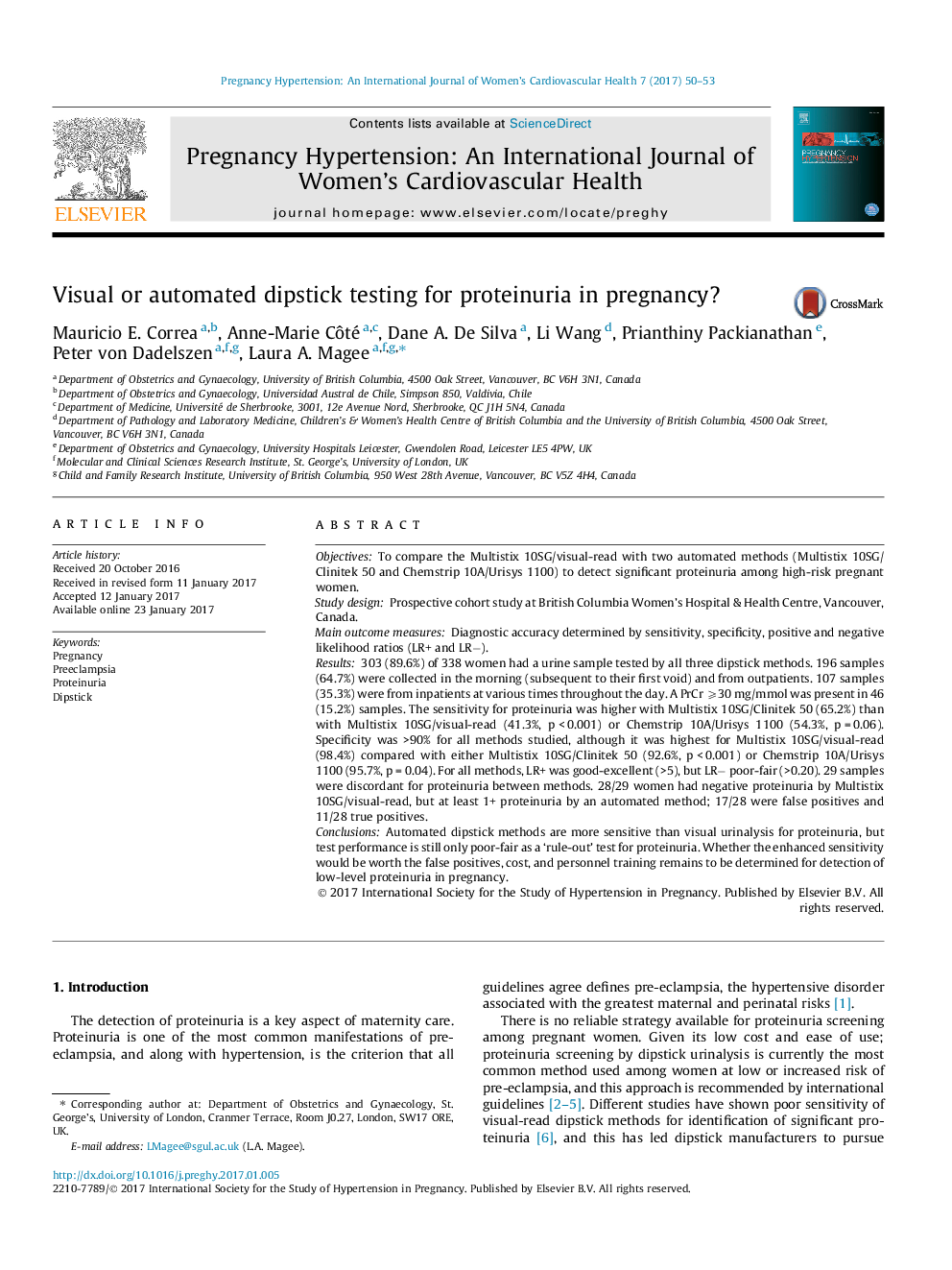| کد مقاله | کد نشریه | سال انتشار | مقاله انگلیسی | نسخه تمام متن |
|---|---|---|---|---|
| 5619440 | 1578911 | 2017 | 4 صفحه PDF | دانلود رایگان |
- Dipstick urinalysis is the most common method of screening of proteinuria.
- The automated dipstick methods tested are more sensitive than the visual method.
- There is an increase in false positive results in automated methods.
- The performance of visual and automated dipstick is poor-fair as a 'rule-out' test.
ObjectivesTo compare the Multistix 10SG/visual-read with two automated methods (Multistix 10SG/Clinitek 50 and Chemstrip 10A/Urisys 1100) to detect significant proteinuria among high-risk pregnant women.Study designProspective cohort study at British Columbia Women's Hospital & Health Centre, Vancouver, Canada.Main outcome measuresDiagnostic accuracy determined by sensitivity, specificity, positive and negative likelihood ratios (LR+ and LRâ).Results303 (89.6%) of 338 women had a urine sample tested by all three dipstick methods. 196 samples (64.7%) were collected in the morning (subsequent to their first void) and from outpatients. 107 samples (35.3%) were from inpatients at various times throughout the day. A PrCr ⩾30 mg/mmol was present in 46 (15.2%) samples. The sensitivity for proteinuria was higher with Multistix 10SG/Clinitek 50 (65.2%) than with Multistix 10SG/visual-read (41.3%, p < 0.001) or Chemstrip 10A/Urisys 1100 (54.3%, p = 0.06). Specificity was >90% for all methods studied, although it was highest for Multistix 10SG/visual-read (98.4%) compared with either Multistix 10SG/Clinitek 50 (92.6%, p < 0.001) or Chemstrip 10A/Urisys 1100 (95.7%, p = 0.04). For all methods, LR+ was good-excellent (>5), but LRâ poor-fair (>0.20). 29 samples were discordant for proteinuria between methods. 28/29 women had negative proteinuria by Multistix 10SG/visual-read, but at least 1+ proteinuria by an automated method; 17/28 were false positives and 11/28 true positives.ConclusionsAutomated dipstick methods are more sensitive than visual urinalysis for proteinuria, but test performance is still only poor-fair as a 'rule-out' test for proteinuria. Whether the enhanced sensitivity would be worth the false positives, cost, and personnel training remains to be determined for detection of low-level proteinuria in pregnancy.
Journal: Pregnancy Hypertension: An International Journal of Women's Cardiovascular Health - Volume 7, January 2017, Pages 50-53
